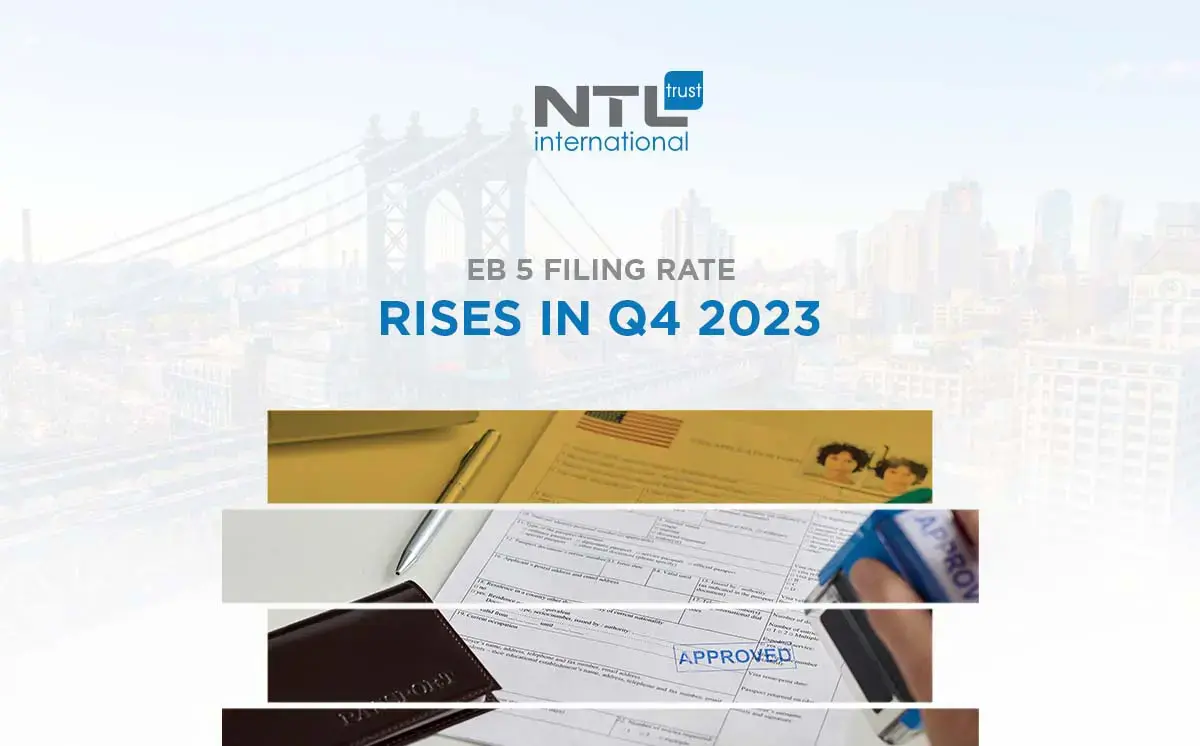
EB-5 Program Applications
Statistics for 2023
The EB-5 Program was launched in 1990 to attract capital and boost the economy of the United States. Here is a brief summary of the number of applications submitted by the end of 2023.
What are the EB-5 Program Applications?
It is an application for obtaining permanent residency to become a green card holder, with one of its basic requirements being investment in commercial enterprises in the United States, in addition to employing 10 qualified American citizens in a full-time position.
Read more about EB-5 program here
Abbreviations to Know Before Reading the EB-5 Program Statistics for 2023:
- USCIS: United States Citizenship and Immigration Services
- I-526: First stage of EB-5 application submission
- I-829: Second stage of EB-5 application submission
In the last quarter of 2023, approximately 954 investors submitted I-526 applications for conditional green cards, marking the highest number recorded for EB-5 Program applications. These applications were distributed among investors who chose the Regional Center, totaling 888 investors, and those who opted to work on their own projects, totaling 57 investors.
The total number of EB-5 Program applicants in 2023 reached 2,735 investors, which is three times the number of applications in 2021-2022. As for the application rejection rate, it decreased from 58.3% in 2022 to 39.5% in 2023. Despite this decrease, the rejection rate for EB-5 Program applications remains high. As for the second stage application (I-829), which is the application for removing conditions on the green card, it is typically submitted two years after filing I-526, so the application rates for this stage have not changed.
It is worth mentioning that the EB-5 visa program continues to work on improving its procedures, speeding up acceptance rates, and providing a favorable environment for investors. Among these improvements are the launch of 46 new projects and the opening of another 231 projects.
You can always stay updated on the latest visa, residency, and citizenship news by following NTL on our website or subscribing to our newsletter.
The Happiest Place on Earth is Still CORONA-FREE
In light of the widespread and rapid of the Corona epidemic Covid-19 worldwide, people are increasingly searching for a safe place to protect themselves and their families.
Grenada opens its consulate in Dubai – UAE
Grenada opens its consulate in the United Arab Emirates, and Ms. Rose Ann Benjamin became the Consul General in it, knowing that this consulate is not the only Grenada consular office in the region, but the services provided may differ from one office to another.
Corona changes the way to apply for citizenship in Grenada
The Citizenship by Investment Unit in Grenada has decided to suspend the receipt of hard copies of files from the date of Friday 20 March 2020 until further notice or until the implementation of the CBI Management Online Information System platform.
Limited Offer from Antigua & Barbuda to add children
The new limited–time offer is to allow adding dependent children under the age of 18 years to the family’s previously approved application and to approve the reduction of fees for adding these dependents
Dominica imposes conditions on three countries for its citizenship … Get to know them
Important changes on the Dominica’s program for citizenship by investment. As the Dominica Citizenship by Investment Unit took stricter measures came into effect last month regarding the citizenship by investment program in Dominica, made substantial changes to the program which will have an effect on citizens of Iran, North Korea, and Sudan.





